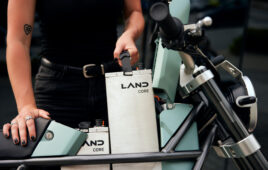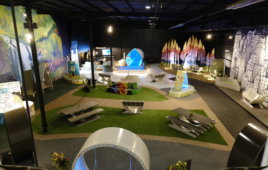MIT’s Department of Materials Science and Engineering (DMSE) researchers have designed alloys that form extremely tiny grains, called nanocrystals. These alloys, only a few nanometers across, retain their nanocrystalline structure even when subjected to high heat. Such materials hold great promise as high-strength structural materials that resist impacts, and may be useful for building turbine blades longer and lighter than conventional structural materials allow.
Graduate student Tongjai Chookajorn guided the effort to design a new class of tungsten alloys with stable nanocrystalline structures, while fellow graduate student, Heather Murdoch, came up with the theoretical method for finding suitable combinations of metals and the proportions of each that would yield stable alloys. Chookajorn then successfully synthesized the material and demonstrated that it does, in fact, have the stability and properties that Murdoch’s theory predicted. They, along with advisor Christopher Schuh, are co-authors of a paper in Science magazine.

An electron microscope image of the structure of a new tungsten-titanium alloy after being exposed to 1100° C for a week. The alloy retains its nanocrystalline structure. (Credit: Chookajorn et al,/Science)
The tungsten-titanium material that Chookajorn synthesized, which has grains a mere 20 nanometers across, remained stable for a full week at 1100°C. This temperature is consistent with processing techniques such as sintering, where powdered material is packed into a mold and heated to produce a solid shape. This means this alloy could become a practical material for a variety of applications where its high strength and impact resistance would be important, said the researchers.
For decades, researchers and the metals industry have tried to create alloys with ever-smaller crystalline grains, explained Schuh. But, he said, “Nature does not like to do that. Nature tends to find low-energy states, and bigger crystals usually have lower energy.”
Looking for pairings with the potential to form stable nanocrystals, Murdoch studied many combinations of metals that are not naturally found together and have not been produced in the lab.
“The conventional metallurgical approach to designing an alloy doesn’t think about grain boundaries,” Schuh said, but rather focuses on whether the different metals can be made to mix together or not. He explained that the grain boundaries are crucial for creating stable nanocrystals. So Murdoch came up with a way of incorporating these grain boundary conditions into the team’s calculations.
Why go to the trouble of designing such materials? Because they can have properties that other, more conventional metals and alloys do not. For example, the alloy of tungsten and titanium that the MIT researchers developed and tested is likely exceptionally strong, and could find applications in protection from impacts, guarding industrial or military machinery, or for use in vehicular or personal armor. But the researchers stress that this fundamental research could lead to a wide range of potential uses.
“This is one case study, but there are potentially hundreds of alloys we could make,” said Schuh.
This research, funded by the U.S. Army Research Office, opens up the use of microstructurally stable nanocrystalline alloys in high temperature applications, such as engines for aircraft or power generation.
MIT Dept. of Materials Science and Engineering
www.dmse.mit.edu
Filed Under: Green engineering • renewable energy • sustainability





Tell Us What You Think!